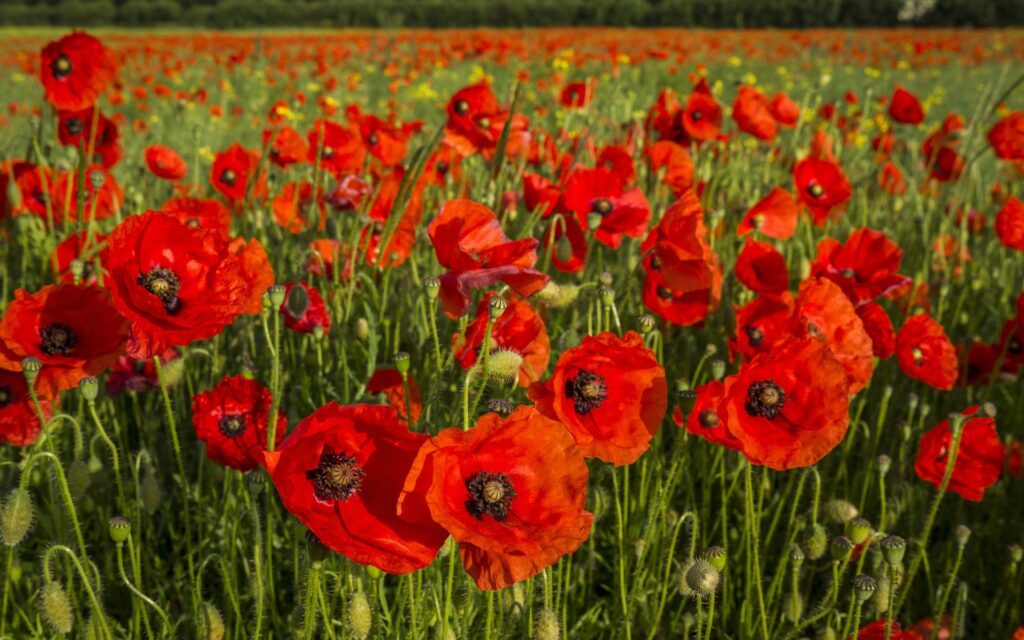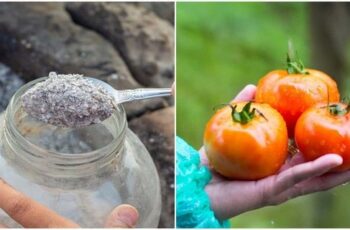Ad Blocker Detected
Our website is made possible by displaying online advertisements to our visitors. Please consider supporting us by disabling your ad blocker.
Discover the top 10 flower seeds that you can sow directly outside and enjoy a beautiful garden. From Bachelor’s Button to Zinnia, these seeds are easy to sow and grow. Learn how to direct-sow outdoors and get a mass of flowers all season long with very little effort.
Transforming your garden into a paradise of stunning blooms can be a breeze, with the straightforward technique of sowing seeds directly onto the soil in the springtime.

It’s truly effortless! Simply select a spot with ample sunlight, enrich the soil with compost, sow the seeds following the instructions on the packet, water them sufficiently, and let them flourish.
Starting your ornamentals and other flowers from seed offers a considerably more cost-effective alternative to buying starter plants and flats from a nursery each season. By adopting this method, you can reap a bountiful and beautiful garden while being budget-savvy.
A multitude of annual flowers that flourish from seeds have the added advantage of being self-sowers, meaning you can plant them once and relish in their recurring presence for years to come.
Seed catalogs offer an extensive array of cultivars to select from, providing a gateway to the most peculiar and captivating varieties not usually obtainable as plugs from your local garden center.
Make your choice among annuals that present a magnificent display in their debut (and only) year, or opt for perennials that will bloom from their second year and beyond. Combining both annuals and perennials will guarantee an ever-blooming garden.
To simplify your gardening venture, we have curated a list of the most effortless flower seeds to sow directly into your garden, ensuring that your patch of land is adorned with a plethora of blossoms.
These resilient and undemanding flowering plants are a perfect choice for novice gardeners with a less-than-green thumb. They are foolproof, low-maintenance, and trouble-free, thriving in your garden in as little as one or two seasons.
1. COLUMBINE (AQUILEGIA SPP.)

Columbine, a genus of flowering plants that flourish in meadows and woodlands throughout the Northern Hemisphere, encompasses a wide variety of species.
With over 70 different types of columbine and nearly as many hybrids and crosses, gardeners can indulge in an extensive array of colors and flower forms to choose from.
The quintessential columbine, a robust, compact, perennial plant, produces delicate, bell-shaped flowers that blossom in the late spring. Its star-shaped flowerheads are characterized by five elongated petals, or spurs, that add to its distinctive charm. Identifying columbine is effortless owing to this signature feature.
Columbine is an ideal plant for starting from seeds and flourishing without much fuss. Despite its short lifespan of 2 to 3 seasons, columbine has the potential to establish itself naturally in the garden through its self-seeding abilities.
To cultivate columbine, sow its seeds during autumn or mid-winter. Keep in mind that columbine seeds require a chilling period of 3 to 4 weeks for successful germination. Once the soil warms up in spring, columbine seedlings will emerge between 30 to 90 days.
Columbine is suited for hardiness zones 3 to 9, tolerating full sun to partial shade exposure. Its lovely bell-shaped flowers typically bloom between April to May, attracting an array of pollinators, including butterflies, hummingbirds, and bees.
2. PANSY (VIOLA SPP.)

Pansies are delightful, diminutive flowers with charming little faces that are sure to bring a smile to anyone’s face.
Violas, a diverse family of flowering plants found across the globe, boasts hundreds of species, along with a plethora of hybrids and cultivars in every hue of the rainbow.
For cooler spring and fall seasons, the garden pansy (Viola × wittrockiana) is a beloved bedding plant. Meanwhile, wild pansy (V. tricolor) will bloom until frost, and sand violets (V. affinis), evergreen violet (V. sempervirens), or bird’s foot violet (V. pedata) are ideal for native pollinator gardens.
While pansies can self-seed throughout the garden, hybrid varieties may not produce true-to-type offspring from seeds. Plant pansy seeds in autumn or early spring as soon as the soil is workable, barely covering them with soil. Depending on soil temperature, germination can take anywhere from 20 to 50 days.
Pansies are versatile plants, suitable for hardiness zones 3 to 10 and adaptable to full sun or partial shade. Their cheery blooms typically grace the garden from April to October, attracting butterflies to their vibrant hues.
3. LUPINE (LUPINUS SPP.)

Most lupine species are native to North America, with Big Leaf Lupine (L. polyphyllus) and Wild Lupine (L. perennis) being popular perennial garden varieties. There are also many hybrids that have been specially bred for improved vigor and color.
To grow lupines from seed, soak the seeds in water for 24 hours before sowing them in early spring. Lupine seeds can take anywhere from 14 to 60 days to germinate, so patience is key. In their second year, you’ll be rewarded with the striking blooms of these stunning plants.
Hardiness zone: 3 to 7
Sun exposure: Full sun
Bloom time: May to July
Attracts: Butterflies, hummingbirds, and bees
4. SWEET PEA (LATHYRUS ODORATUS)

Sweet Pea is a delightful annual flower with an intense fragrance and showy winged and ruffled blooms that come in a spectrum of colors, excluding yellow. Its flowers make excellent cuttings and are cut and come again, meaning the more you harvest, the more they bloom. Furthermore, sweet pea is a legume that enhances soil fertility by fixing nitrogen.
With twining tendrils, sweet pea vines can gracefully climb up trellises and wigwams, while they will form lovely bushy mounds in the absence of a support structure. Native to the Mediterranean, sweet pea thrives in cooler summer climates and blooms continuously from spring to fall. Hot and humid weather can cause the plant to wilt, but you can prolong its flowering by keeping the soil cool with mulch.
Sowing sweet pea seeds in the right season is crucial. In zones 7 and below, directly sow seeds in the garden before the last frost date in late winter or early spring. In zones 8 and above, plant seeds in late fall. Prior to sowing, soak the seeds in water for 24 hours, and germination should occur within 7 to 15 days.
Hardiness zone: 2 to 11 (annual)
Sun exposure: Full sun
Bloom time: May to September
Attracts: Bees and butterflies
5. POPPY (PAPAVER SPP.)

Poppies are a delightful addition to any garden, with both annual and perennial varieties that require minimal effort once planted. Poppies readily self-seed and will come back year after year to brighten up your space with their vibrant blooms.
The field poppy (P. rhoeas) is a classic favorite with its striking scarlet petals adorned with dark centers. For a wider range of hues, consider the Oriental poppy (P. orientale) with its array of colors from pinks and oranges to purples and whites. The breadseed poppy (P. somniferum) produces stunning mauve flowers and is also known for its edible poppy seeds.
Beyond these popular varieties, there’s a vast selection of poppies to choose from, including California poppy, Iceland poppy, Spanish poppy, Moroccan poppy, and Welsh poppy, to name a few.
Sowing poppy seeds couldn’t be simpler. Scatter them over the soil surface before the last frost in early spring and wait for them to germinate, which typically takes 20 to 30 days.
Hardiness zone: 3 to 10
Sun exposure: Full sun
Bloom time: June to August
Attracts: Bees and butterflies.
6. CONEFLOWER (ECHINACEA SPP.)

Coneflowers are an excellent choice for gardeners looking for low-maintenance and resilient perennials. These native beauties boast large, daisy-like blooms that persist for an extended period, providing nectar and seeds to support a host of pollinators and wildlife. Best of all, coneflowers return with greater vigor and beauty year after year without needing much attention.
Thanks to extensive breeding efforts, there is now a vast array of coneflower varieties to choose from. While purple coneflower (E. purpurea) remains a classic choice, the newest cultivars come in a wide range of vivid or pastel hues, featuring fluffy or double blooms that can alter coneflower’s appearance entirely.
To add coneflowers to your garden, sow seeds outdoors in early spring or fall, covering them with soil at a depth of about 1/8-inch. Seedlings typically emerge in 10 to 21 days.
Hardiness Zone: 3 to 10
Sun Exposure: Full sun to light shade
Bloom Time: June to August
Attracts: Butterflies, birds, and bees.
With their numerous benefits, coneflowers make a great addition to any garden. They are easy to grow, provide vibrant colors and textures, and support wildlife, making them an excellent investment for any gardener.
You can go to the next page to read the rest of this article

